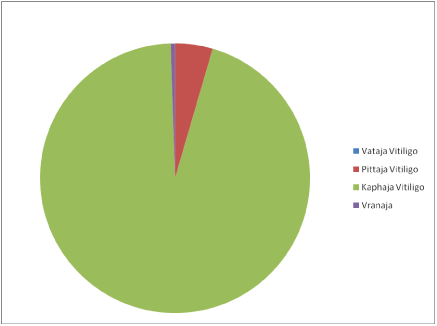
Figure 1: Vitiligo-Doshaja types observed


Salim Musa Mulla*
SMBT Ayurveda Medical College and Hospital, Nashik, Maharashtra, India*Corresponding author: Salim Musa Mulla, SMBT Ayurveda Medical College and Hospital, Nashik, Maharashtra, India, Tel: +91 7588627408; E-mail: drsmmulla@hotmail.com
This is a single-blind clinical trial on patients of vitiligo, a disease rather difficult for a cure. Aetiology is multifactorial. It can be hereditary, autoimmune, hormonal, dietary, stress or secondary to other systemic diseases like diabetes mellitus, hypothyroidism, etc. This study was carried out on 200 outdoor patients suffering from vitiligo. Patients from both sexes, from age group five to seventy years complaining mainly as white patches over skin were studied. Patients were treated with an Ayurvedic polyherbal powder mixture containing Psoralia corylifolia (Bakuchi) as the main ingredient supplemented with local application and phototherapy (natural). Most of the patients undergo intermittent body purification i.e. shodhana-panchakarma treatments like Vamana (therapeutic emesis), Virechan (purgation), Basti (enematous treatment for Vaatadoosha) raktamokshana, etc., as per ayurvedic guidelines. Duration of treatment was of one month to one year depending upon response and requirement for the treatment. Follow-up was biweekly to monthly. The response to treatment was observed in terms of reduction in the area of depigmentation after treatment. Complete cure was noted in 12% of patients. A good result is noted in 18% cases, moderate in 45% cases and mild result in 25% cases noted. The result is statistically highly significant at 0.1% level. No major side effects of the treatment given were observed. The treatment is effective in kaphaja and pittaja types of vitiligo as per Ayurvedic classification. The results of internal medications and local treatment were aggregated especially after panchakarma treatment.
Vitiligo; Ayurvedic polyherbal mixture shwitrayoga; Psoraliya corylifolia; Natural phototherapy; Panchakarma highly effective
Since long ago, the treatment of vitiligo is a challenge to the medical fraternity. It creates a very bad social stigma for the victim. In my clinical practice, I came across the number of patients suffering from vitiligo. The victims are physically affected and also under very gross psychological stress. Allopathic skin specialists have no satisfactory permanent cure for vitiligo. In fact, allopathic skin specialists are using harmful chemicals and steroids for the treatment. So I decided to work on this subject for the benefit of mankind with the basic Ayurveda principles for the safe and effective of vitiligo.
In Ayurveda majority of skin ailments are considered as minor (kshudra) diseases. But as in vitiligo (shwitra), in spite of manifestation of disease over the skin, there may be systemic involvement. It is ‘Aparisravi (Non discharging), so it is considered separate from leprosy. It affects males and females equally. Worldwide 0.5 to 1% population is affected with vitiligo. Age of onset is before the 20 to 30 years of age in most of the patients. Mostly it affects both sides of the body equally. It can affect any area of body eg: Face, lips, arms, legs, genitals, scalp, soles, palms, trunk, back, neck, fingers, etc. In some areas like lips, scalp, joints, genitals it is described as difficult for a cure. In Ayurveda, it is called as ‘Shwitra’ [1].
As per Ayurveda, it has same causative factors as kushtha i.e., leprosy. It is without discharge, vitiated with three doshas i.e., Vata, Pitta, Kapha doshas.
In Ayurveda, it is classified as Vaataja, Pittaja, and Kaphaja as per dosha vitiated. Vataja shwitra is dry (ruksha) and of Red-black (arun) in color. Pittaja is coppery or lotus-like in color and associated with inflammation (daha) and loss of hair. Kaphaja shwitra is hard, heavy with white color and associated with itching. It is associated with rakta (blood), mansa (Muscle tissue) and meda (lipid) dhatus as per Vaata, Pitta, and Kapha Dosha-vitiation respectively [1,2]. In fact, these are the progressive stages of the disease, so also prognosis worsens accordingly.
Additionally, Charaka has named Shwitra (Kilasa) as Darunam, Varunam, and Shwitram when the Doshas are seated in Rakta, Mansa and Medo Dhatus respectively. In fact, dhatu’s are not practically affected, but their itiation is expressed by dermis (twak).
Madhavnidan classified shwitra on the basis of the causative factors viz., Doshaja and vranaja [3]. Acharya Charaka has described some special causes for vitiligo e.g. telling lie, not believing God, not apologizing someone’s good deeds, performing sins, deeds of pervious life (poorvakarma) etc. [1] (charak chikitsa 7/177). These causes point to the inheriting nature of the disease in some cases and towards mal or abnormal thinking by the brain (pradnyaparadha) as a major cause. Unbalanced diet (Virrudhahara) is also an important cause. It signifies production of toxic metabolites as an important cause for the development of the disease. It is different from Leprosy (kushtha) in the respect that it is non-contagious, non-bacterial, it doesn’t destroy body tissues, doesn’t have any discharge (vyadhiswabhava). Leprosy (Kushtha) deeply goes up to all Dhatus. Vitiligo (shwitra) occupies only skin, blood, muscle tissue (mansadhatu) and fat (medadhatu).
Treatment needs a holistic approach. There is an imbalance of regulating hormones for melanin synthesis. For homeostasis of hormones and detoxifying body with Ayurvedic body purification treatment i.e., panchakarma is very useful. In fact, in Ayurveda, it is described as powerful purificatory treatment and it should be done before commencing any specific medical treatment for the disease.
Madhavanidana described that Vitiligo (shwitra) in which hairs are black, in a small percentage, with ununited spots, new (<1 year-charak) is curable. Others including developed due to burns, in genitals, hands, and feet, lips, with a history of inheritance are non-curable or difficult for a cure [2].
In Ayurveda internal medications (abhyantara chikitsa), Local application (lepchikitsa), sun UV rays exposure (aatapsevan), Body purification i.e., Panchakarma treatment-Therapeutic Emesis (vaman), Purgation (virechan), Basti-purification method for vata, Bloodletting (raktamokshan), etc., advised in texts. Treatment is long-term and should be continued from months to years [1].
Vitiligo is a common acquired disorder of skin pigmentation characterized by localized loss of skin pigments secondary to melanocytes damage. It is estimated to affect approximately 0.5 to 1% of the population worldwide. It results from an autoimmune process that damages melanocytes. The disease disturbs individuals psychologically, particularly in dark-skinned victims. The cause is multifactorial, may be genetic, autoimmunity, neurologic factors, toxic metabolites, and lack of melanocyte production or early degeneration of melanocytes.
According to modern pathophysiology, in generalized vitiligo, melanocytes are not found in the affected skin. Melanocytes contain the pigment melanin which serves a protective action against the harmful effects of sunlight.
Phenylalanine → Tyrosine → Dihydroxyphenylalanine (DOPA) → Melanin (adrenals)
Melanin formation in the skin is augmented by the hormone Melanocyte Stimulating Hormone (MSH) or intermedion secreted by the pars intermedia of the pituitary gland. ACTH by anterior pituitary has melanocyte stimulating activity similar to MSH although to a much lesser degree. 25% of cases are autoimmune.
The pathogenesis is thought to involve an autoimmune process targeted against melanocytes. Histologic studies showed an absence of melanocytes in the affected skin. An autoimmune process is also suggested by the concomitant occurrence of other autoimmune diseases in patients with vitiligo. Patients with vitiligo have an increased incidence of several autoimmune disorders including hypothyroidism (common), Graves’ disease, pernicious anemia, Addison’s disease, alopecia areata, chronic mucocutaneous candidiasis, etc. Diabetes mellitus is also associated with some subjects. Vitiligo is a T-cell mediated autoimmune disease. Heat shock protein 70 (HSP70) plays a central nonredundant role in precipitating of depigmentation in vitiligo.
Localized hypopigmentation is also found in chemical leukoderma, piebaldism (autosomal dominant disorder), post-inflammatory, tinea versicolor etc. Diagnosis of vitiligo can be ascertained by skin biopsy.
The commonly needed laboratory investigations like Complete Blood Count (CBC), BSL, Urine-Routine and Microscopic examination, and some hormonal assays like T3, T4, TSH estimation was done in suspected patients. In some patients, skin biopsy was required to confirm the diagnosis.
Also enquired about MSH hormone estimation, but such investigation technique was not found in available laboratories.
In suspected hereditary cases the diagnosis can be confirmed by DNA analysis also. In this study hereditary factor is decided by detailed family history taking.
In allopathic system no satisfactory and permanent cure is available. Treatment is steroid based, systemic psoralens with exposure to long wave UV radiation. Topical potent corticosteroids are used. Other treatment options are surgical and cosmetic. Skin grafting is practiced but again it has its serious side effects and limitations [4].
A. To study the efficacy of Ayurvedic Polyherbal mixture ‘shwitrayoga’ with local application and natural phototherapy and panchakarma in vitiligo (Shwitra) patients.
B. To note side effects of the treatment if any.
The following methodology is adopted to conduct the study.
For collecting all the available information about Vitiligo, the literary review of available ayurvedic texts and Samhitas done thoroughly. Also, references from modern medicine books studied. Also, previous research on vitiligo reviewed from literatures [1-11].
Study design: This is a single-blind clinical trial in patients with vitiligo. The study was carried out on 200 outdoor patients. Patients were just informed that they are undergoing ayurvedic medicine treatment for vitiligo. They were not informed about the exact medicines or the identity of medicines. No written prescriptions of the medicines given to patients under trial. The hospital staff was also unaware of the formulation. The study was conducted for last 12 years.
Selection of patients: The study was carried out on outdoor patients suffering from vitiligo.
A) Inclusion criteria
a. Patients complaining of white depigmentation areas over skin as the main complaint.
b. Patients from age 5 to 60 years of age.
c. Selection is irrespective of the constitution (prakruti), sex, duration of the disease.
d. Patients with or without a family history (kulavrutta) of vitiligo.
B) Exclusion criteria
a. Patients below age of 5 years and above 70 years of age.
b. Pregnant and lactating women.
c. Patients unfit for treatment.
1. Mulla Ayurvigyan Hospital, Islampur District, Sangli, Maharashtra, India
2. Mulla Clinic, Shirala District, Sangli, Maharashtra, India
3. Mulla Clinic, Sangli, Maharashtra, India
Informed consent about nature and purpose of study from each patient was taken.
“SHWITRAYOGA” (Anubhoot-experienced) contains five ingredients for 10 grams as follows:
Local Application: (Anubhoot-experienced) tablets with Psoraliya corylifolia-(Bakuchi) as main ingredient.
Collection of Material: From well known Ayurveda raw material dispenser.
Mode of action: (Drug Pharmacology) [5] (Table 1).
| Drug | Rasa-taste | Veerya- potency | Vipak- Post- digest effect |
Action on Doshas |
Specific Action | Active Ingredient | Reference |
| Psoraliya corylifolia | Bitter Pungent | Hot | Pungent | Checks Kapha, Vaata | Stimulates melanocytes for Melanin synthesis, Immunomodulatory | Psoralen Isopsorale,bakuchiol, bavchinin bavachin, corylin | Bhavaprakash Dhanvantari Nighantu |
| Acasiacatechu | Bitter Astringent | Cool | Pungent | Checks Kapha, Pitta | Shwitraghna | Catechin Rutin | Bhavaprakas |
| Plumbago zeylanica | Pungent | Hot | Pungent | Checks Kapha Vaata | Kushthaghna | Plumbagin | Bhavaprakash |
| Nordostachysjatamansi | Bitter astringent, sweet | cool | Sweet | Checks vitiation of 3 doshas | Kushthaghna Stress reliever | Acaciin, ursolie acid nardosinonedi-ol | Nighantusangr- aha |
|
Emblica officinalis |
Sour, Astringent pungent, bitter sweet | Cool | Sweet | Checks vitiation of 3 doshas | Rasayana blood purifier Skin rejuvenation immunomodulatory | Vitamin C emblicanin A, B | Bhavaprakash |
Table 1: Mode of action: (Drug Pharmacology) [5]
Textual dose of churna is 1 Karsha i.e., approximately 10 grams. Today it seems very high.
Practically used dose: adults-3 to 5 grams
Children-doses adjusted according to age and weight.
Local Application: as required
Natural phototherapy (sunbath)-5 to 20 mins, early in the morning as required depending on sunrays intensity and body response.
Patients were advised to take medicine as per scheduled dose 2 times a day after food. Also advised for applying local application once in a day in the early morning and advised to take natural sun exposure on affected areas. Intermittently panchakarma procedures like vamana, virechan, basti, and raktamokshan were carried out in these patients as and when required as per textual guidelines.
One month to one year.
Follow up-Monthly for one year.
It is shown in table 2 and figure 1.

Figure 1: Vitiligo-Doshaja types observed
| Doshaja Type | Diagnostic signs |
Dushya (Affected dhatu) (Body tissue) | Patients observed |
% |
| Vaataja (Darunam) | Ruksha (Dry), red-black (arun) | Rakta (blood) | 0 | 0 |
| Pittaja (Varunam) | Coppery/Lotus like, Daha (inflammation) | Mansa (Muscle ti ) | 9 | 4.5 |
| Kaphaja (Shwitram) | Hard, heavy, white, itching | Meda (Lipid tissue) | 190 | 95 |
| Vranaja (due to scar tissue) | Hard, white, pinkish | Twak (skin), Mansa etc. | 1 | 0.5 |
Table 2: Doshaja type of disease shwitra-vitiligo (classification)
It is given in table 3 and figure 2.
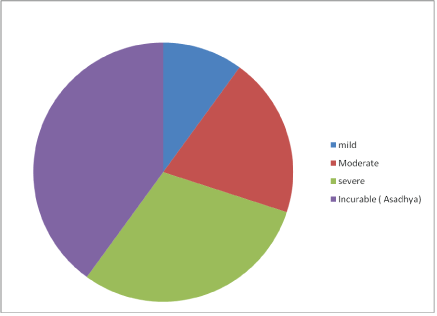
Figure 2: Severity of vitiligo in observed patients
| Severity | No. of patients | Percentage |
| Mild-New (<one month), normal hair colour, lesions not intermixed), lesions not clearly white | 20 | 10 |
| Moderate-onset of 2 to 6 months, affected hair colour, lesions intermixing, lesions clearly white | 40 | 20 |
| Severe-onset 6 months to 1 year, lesions intermixed, clear white lesions with hair colour affected | 60 | 30 |
| Incurable (Asadhya)-lesions >1 year duration, lesions very close to each other, lesions on palmer and planter surfaces, anal area, genitals, lips etc. lesions due to burns | 80 | 40 |
Table 3: Disease severity in observed patients
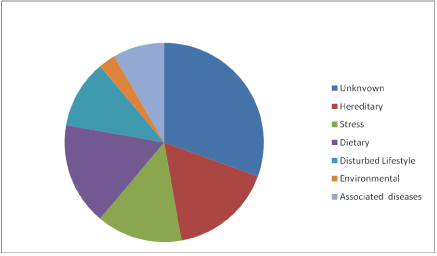
Figure 3: Vitiligo-Aetiology observed
| Causative factor | No. of patients | Percentage |
| Hereditary | 30 | 15 |
| Stress | 25 | 12.5 |
| Dietary | 30 | 15 |
| Disturbed Lifestyle | 20 | 10 |
| Environmental | 05 | 2.5 |
| Associated other diseases like thyroid disorder, Diabetes Mellitus, etc. | 15 | 7.5 |
| Unknown | 55 | 27.5 |
Table 4: Observations regarding aetiology
Observations were made in the following ways; Initial areas of white lesions were taken as 100% for each patient separately. The response to the treatment was observed in terms of normal pigmentation developed and reduction in the area of depigmentation after the treatment and expressed as percentage improvement in each patient. Most important factor noted was that the areas of repigmentation developed. Repigmentation developed by way of new spots of skin color at the base of hair follicles or as borders between the normal and affected skin and the baseline recoloration. Photographs before and after treatment were taken and shown in figures 4-20, also side effects if any were observed, noted and treated accordingly.
Percentage relief was calculated according to following formula:
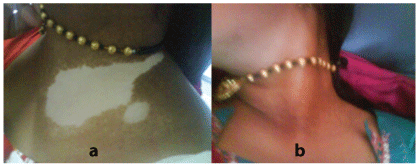
Figure 4: a) Before treatment b) After treatment
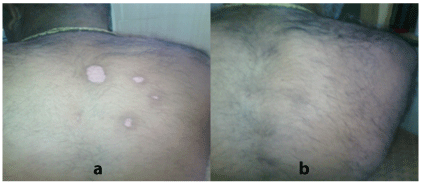
Figure 5: a) Before treatment b) After treatment
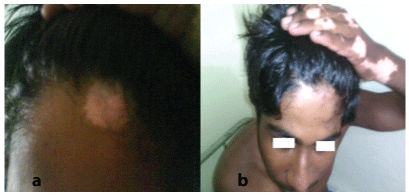
Figure 6: a) Before treatment b) After treatment

Figure 7: a) Before treatment b) During treatment

Figure 8: a) Before treatment b) With treatment c) With Treatment

Figure 9: a) Before treatment b) After treatment
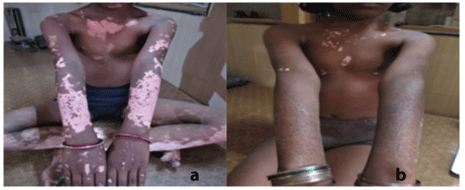
Figure 10: a) Before treatment b) With treatment
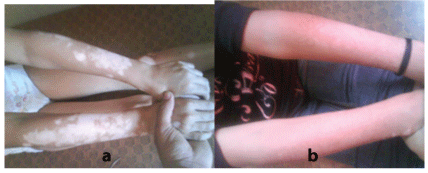
Figure 11: a) Before treatment b) After treatment
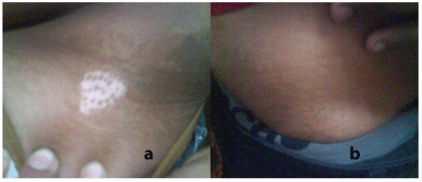
Figure 12: a) Before treatment b) After treatment
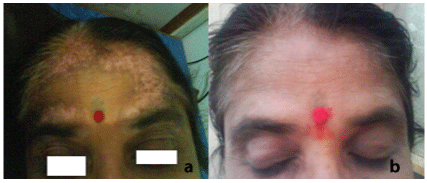
Figure 13: a) Before treatment b) After treatment

Figure 14: a) Before treatment b) Few months after treatment start

Figure 15: a) Before treatment b) With treatment
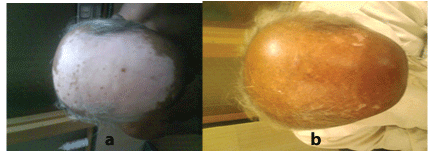
Figure 16: a) Before treatment b) With treatment
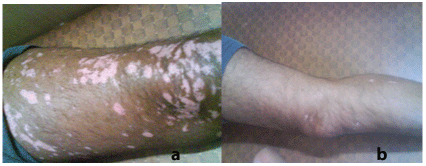
Figure 17: a) Before treatment b) With treatment

Figure 18: a) Before treatment b) With treatment
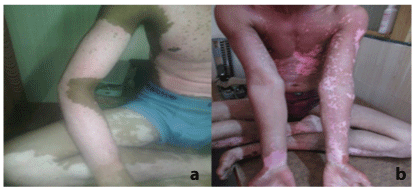
Figure 19: a) Before treatment b) With treatment
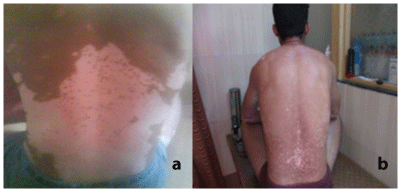
Figure 20: a) Before treatment b) With treatment
\[Percentage{\rm{ }}relief = \frac{{{A_o} - {A_L}}}{{{A_o}}} \times 100\]
Where,
Ao =% of vitiligo lesions before treatment
AL =% of vitiligo lesions after 12 months of treatment. (After the end of treatment).
The criteria for evaluation were decided which are presented in table 5.
| Repigmentaion/ Recolouration % |
Description | Result |
| 0 | No effect-No repigmentation | Nil |
| 1-33 | Intermittent repigmentation (spots) with normal skin colour | Mild |
| 34-67 | Dense repigmentation (large united spots) with borders around lesions and base recolouration | Moderate |
| 68 -99 | Very dense repigmentation with borders and base recolouration and totally normal skin colour development | Good |
| 100 | Total healing of the lesion (Normal Skin) | Complete |
Table 5: The criteria for evaluation was decided as
Change in the mean of severity before and after treatment is calculated. Statistical methods like mean, Standard Deviation (SD), Standard Error (SE), etc., are applied to find out variations in observations.
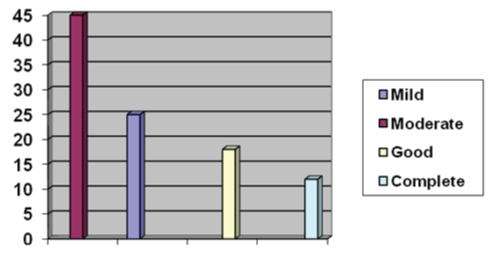
Figure 21: Showing % of result after treatment with Shwitrayoga
| Result | No. of patients | Percentage % |
| Nil | 0 | 0 |
| Mild | 50 | 25 |
| Moderate | 90 | 45 |
| Good | 36 | 18 |
| Complete | 24 | 12 |
Table 6: Results
Calculations [12] We take the sample size as 200 and apply paired “Z test”.
1. X1=% of vitiligo lesions before treatment i.e., 100% for a particular patient
X2=% of vitiligo lesion after treatment
x=difference (X1-X2)
\[{\rm{Mean of difference }}X = \sum x = \frac{{11289}}{{{n_{200}}}} = 56.44\]
Ho =Null hypothesis-there is no real difference between the means of two sets of observations.
3. SD of differences=25.45
4. SE of difference= SD n ÷ = ÷ 25.45 200 1.79
\[5.\,\,\,Z = \frac{{Observed{\rm{ }}difference{\rm{ }}between{\rm{ }}means{\rm{ }}of{\rm{ }}two{\rm{ }}samples}}{{SE}} = 56.44 \div 1.79{\rm{ = }}31.53\]
The observed ‘Z’ value is 31.53 times the standard error. Here probability is <0.001. So it is highly significant at 99.9% confidence limits. Probability comes to <0.001 (real variability). So the difference in the means of two sets of observations is highly significant at 1% (0.1%) level. So we reject the null hypothesis and accept the alternative hypothesis (H1). So the Ayurvedic treatment approach with “Polyherbal powder mixture shwitrayoga along with local application, phototherapy and panchakarma therapy” is responsible for this difference.
This is a single-blind clinical trial on patients with vitiligo. Total 200 patients were treated and observed for the response with Ayurvedic treatment with polyherbal powder mixture “shwitrayoga” along with local application and phototherapy with intermittent panchakarma treatment. Percentage of repigmentation noted with regular follow up of patients.
The observations can be summarized as follows:
The following conclusion can be drawn from the present study
To My father and Mother and my entire Guru’s who guided me.
To all my patients who participated in this study
To effective Ayurveda and its firm principles.
Download Provisional PDF Here
Aritcle Type: REVIEW ARTICLE
Citation: Mulla SM (2018) Vitiligo-Ayurvedic Treatment Approach. J Clin Cosmet Dermatol 2(3): dx.doi.org/10.16966/2576-2826.129
Copyright: © 2018 Mulla SM. This is an open-access article distributed under the terms of the Creative Commons Attribution License, which permits unrestricted use, distribution, and reproduction in any medium, provided the original author and source are credited.
Publication history:
All Sci Forschen Journals are Open Access